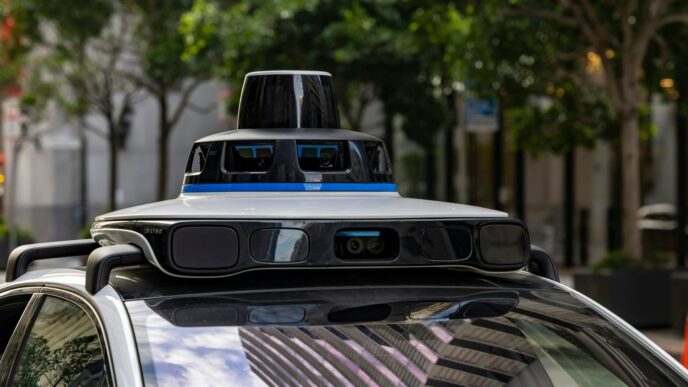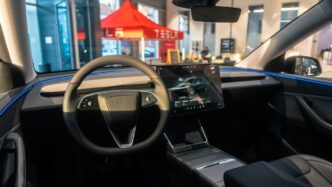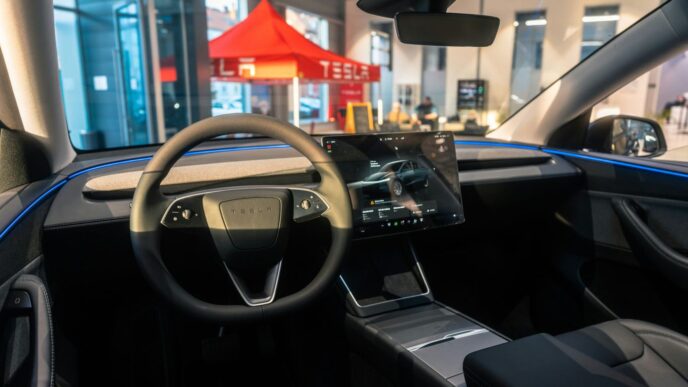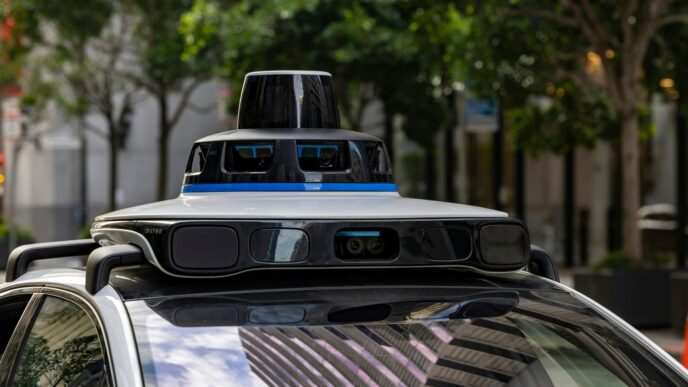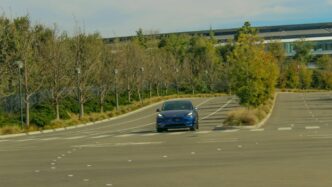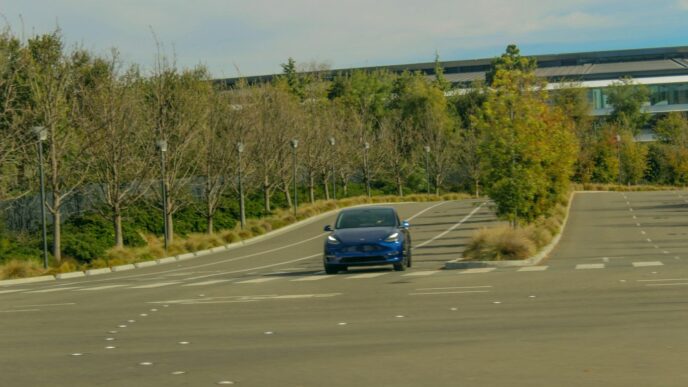Moove And Waymo: A Transformative Partnership
This is a pretty big deal, right? Moove, a company that’s been making waves in Africa with its vehicle financing, is teaming up with Waymo, the self-driving tech giant from Google’s parent company, Alphabet. It looks like they’re joining forces to really push forward how people get around in cities. Think less traffic jams, more efficient rides, and maybe even a future where you don’t have to worry about parking.
African Startup Secures Significant Funding
So, Moove is reportedly close to getting a massive amount of debt funding, something like $1.2 billion. This isn’t just pocket change; it’s the kind of money that can really get things moving. It’s meant to help them build out a fleet of self-driving cars. It’s pretty cool to see an African startup aiming so high on the global stage, especially in something as tech-heavy as autonomous vehicles. They’ve apparently paid back their first loans, which the CEO mentioned shows they’re mature and ready for this next big step. It really highlights how far fintech and mobility solutions from the continent have come.
Collaboration with Alphabet’s Waymo
Partnering with Waymo is a huge signal. Waymo has been in the self-driving game for a long time, testing and refining their technology. They’re already running robo-taxi services in places like Phoenix. This collaboration means Moove gets access to some of the most advanced autonomous driving tech out there. It’s not just about having the cars; it’s about integrating that technology into a service that people can actually use. They’re looking to combine Waymo’s tech with Moove’s financing know-how to create something new for urban transport.
Accelerating Urban Mobility
What does this all mean for cities? Well, the goal is to make getting around easier and more efficient. Imagine hailing a self-driving car through an app, much like you might do now, but with the added benefit of potentially lower costs and more availability as the technology scales. This partnership could speed up the adoption of these vehicles in urban areas, making transportation more accessible and perhaps even reducing the number of cars on the road. It’s a step towards a future where getting from point A to point B is a lot smoother.
The Future Of Urban Mobility
The way we get around cities is changing, and it’s happening faster than a lot of us thought. Autonomous vehicles, or AVs, are at the heart of this shift. We’re talking about cars that can drive themselves, which sounds like science fiction, but it’s becoming a reality.
Autonomous Vehicle Deployment
Right now, AVs are getting pretty good, but they’re not quite perfect. Think of Level 3 automation: the car can handle most of the driving, but you still need to be ready to take over if it asks. Some cars can already do things like change lanes on the highway by themselves, but you’ve got to keep your hands on the wheel. For true self-driving, we’re looking at Level 4, where the car can handle driving in specific situations without any human help. Many car companies are working on this, aiming for Level 4 features in the next few years.
Customer Trust and Technology Adoption
Of course, getting people to actually trust these self-driving cars is a big hurdle. It’s one thing for a car to be able to drive itself, and another for people to feel comfortable letting it. Early on, we’ll probably see these advanced cars in the luxury market. Imagine being able to work or relax during your commute – that’s a big draw, even if the price tag is high. By 2030, a small percentage of new cars sold might have Level 4 capabilities, mostly for highway driving.
Regulatory Landscape for AVs
Beyond customer acceptance, there’s the whole issue of rules and regulations. Governments and cities need to figure out how to handle these new vehicles safely and fairly. This includes everything from how AVs interact with regular cars and pedestrians to who’s responsible if something goes wrong. It’s a complex puzzle, and getting it right is key to making sure AVs can actually benefit everyone.
Here’s a look at where we stand with AV technology:
- Current Status: Advanced Driver Assistance Systems (ADAS) are common, offering features like adaptive cruise control and lane keeping.
- Level 3 Automation: Vehicles can handle most driving tasks under specific conditions, but require human supervision and intervention.
- Level 4 Automation: Vehicles can operate autonomously within defined operational design domains (ODDs) without human intervention.
- Future Goal: Widespread adoption of Level 4 and eventually Level 5 (full automation in all conditions) is the long-term vision.
Moove’s Strategic Vision
Moove isn’t just jumping into the autonomous vehicle game; they’ve got a clear plan. It’s all about building a solid financial foundation and then expanding outwards. They’ve been working hard to get their finances in order, which is a big deal when you’re talking about big investments like fleets of self-driving cars.
Financial Maturity and Lender Relationships
Moove has been focused on proving its financial stability to lenders. This isn’t just about asking for money; it’s about showing they can manage it responsibly. They’ve even paid back their very first loans, which is a pretty significant sign that they know what they’re doing. This maturity is key to getting the kind of large debt funding needed for something as big as an autonomous fleet. It shows they’re not just a startup with a flashy idea, but a business that can handle serious financial commitments.
Global Expansion Plans
Once the financial groundwork is laid, Moove is looking to grow. The partnership with Waymo is a big step towards this, but it’s not the end goal. They’re thinking about how to bring their model to new cities and countries. This involves understanding different markets and how to best introduce autonomous mobility solutions everywhere.
Leveraging Fintech and Mobility
Moove’s real strength lies in how they combine financial technology (fintech) with the mobility sector. They’re not just a car company or a tech company; they’re using smart financial tools to make mobility more accessible. This approach allows them to:
- Develop new ways for people to access transportation.
- Create flexible payment and financing options.
- Integrate cutting-edge technology with practical, everyday use.
It’s this blend that really sets them apart and positions them for future growth in the evolving world of urban transport.
Waymo’s Role In Autonomous Driving

Waymo, an Alphabet company, has been a major player in the self-driving car scene for a while now. They’ve really focused on making robo-taxi services a reality, and it shows. They were one of the first to really push for public rides in their autonomous vehicles.
Pioneering Robo-Taxi Services
Waymo has been testing and operating its driverless ride-hailing service in places like Phoenix, Arizona. It’s pretty cool because you can hail a Waymo car through an app, kind of like you would with Uber or Lyft. They’ve been working on this for years, gathering data and refining the technology. It’s not just about having the cars; it’s about building the whole system to support it, from the vehicles themselves to the software that manages the fleet and the customer experience.
Data and Performance Metrics
Getting self-driving cars to work safely is all about data. Waymo has logged a ton of miles in autonomous mode. According to some reports, they’ve driven over 13,000 miles without a human needing to take over. That’s a lot of driving! This data is super important for improving the system. They track things like how often the car has to disengage, how it handles different situations, and how it compares to human drivers. It’s a constant cycle of driving, collecting data, and making the system smarter.
Navigating Diverse Operating Conditions
Driving a car is easy enough when the weather is perfect and the roads are clearly marked. But self-driving cars have to handle a lot more. Waymo has been working on making their vehicles capable of driving in all sorts of conditions. This includes:
- Dealing with different weather, like rain or fog.
- Handling roads that aren’t perfectly maintained or have unclear lane markings.
- Reacting to unexpected things, like pedestrians or cyclists who don’t follow the rules.
It’s a big challenge, and Waymo is putting a lot of effort into making sure their cars can operate safely, not just in sunny Arizona, but in more complex environments too. This is key for them to expand their services to new cities.
Industry Dynamics And Key Players
The world of autonomous vehicles (AVs) and urban mobility is a rapidly shifting landscape. It’s not a space where any single company can go it alone anymore. Think of it like a big, complicated puzzle – everyone’s trying to fit their piece in, and sometimes, you need to work with others to see the whole picture.
Competitive Landscape in AV Market
The AV market is buzzing with activity. We’ve got tech giants pouring billions into research, traditional car makers trying to catch up, and a whole host of startups with fresh ideas. It’s a race, for sure, but also a time of big opportunities. Companies are figuring out where they can make the biggest impact, whether that’s building the cars themselves, developing the software, or providing the services that use these new vehicles.
Here’s a quick look at who’s who:
- Tech Companies: Think Google’s Waymo, Amazon’s Zoox. They’re often leading the charge with their own self-driving tech and robo-taxi services.
- Automakers (OEMs): Companies like Ford, GM, and Volkswagen are investing heavily, sometimes partnering with tech firms, sometimes developing their own systems.
- Specialized AV Companies: Startups and established players focusing purely on autonomous driving technology or specific applications like trucking (e.g., Aurora, TuSimple).
- Mobility Service Providers: Companies like Uber and Lyft, who are looking at how AVs will fit into their existing ride-hailing models, and now, companies like Moove, focusing on fleet management for these new vehicles.
OEMs and Tech Company Synergies
Traditional car manufacturers, or OEMs, are in an interesting spot. They’ve got the manufacturing know-how and the established brands, but they’re also facing a steep learning curve with software and AI. That’s why you’re seeing so many partnerships forming. Automakers need the cutting-edge tech from the Silicon Valley crowd, and the tech companies often need the manufacturing scale and automotive experience that OEMs bring to the table. It’s a classic case of needing to combine strengths to get ahead.
Strategic Alliances in Autonomous Tech
These partnerships aren’t just about sharing technology; they’re about sharing risk and speeding up development. Building a fully autonomous vehicle and the infrastructure to support it is incredibly expensive and complex. So, companies are teaming up to:
- Share R&D Costs: Splitting the massive investment needed for developing self-driving systems.
- Access New Markets: Partnering can open doors to different customer bases or geographical regions.
- Develop Standards: Working together can help establish common protocols and safety standards, which is vital for widespread adoption.
The Moove and Waymo partnership is a prime example of this trend, aiming to bring together Waymo’s autonomous driving expertise with Moove’s experience in scaling mobility solutions. It shows how different players are finding ways to collaborate to push the entire industry forward.
Economic Implications Of The Moove Waymo Alliance
This partnership between Moove and Waymo is a pretty big deal, especially when you think about the money involved and what it means for the future of getting around cities. It’s not just about cool tech; it’s about how we’re going to pay for it and who benefits.
Debt Funding For Autonomous Fleets
So, Moove is reportedly looking at a massive amount of debt funding, something like $1.2 billion, to get its self-driving cars on the road. This is a huge sum, and it shows that lenders are starting to see the potential in autonomous vehicle fleets. It’s a sign that this isn’t just a pipe dream anymore; it’s becoming a real investment opportunity. This kind of financing is key to scaling up these expensive technologies. It means companies can buy a lot of vehicles and the necessary infrastructure without having to rely solely on selling shares, which can dilute ownership.
Impact on African Startups
For Moove, being an African startup securing this kind of funding and partnering with a giant like Waymo is pretty remarkable. It really puts a spotlight on African innovation in the tech and finance world. It shows that startups from the continent can compete on a global stage and attract serious investment for cutting-edge projects. This could pave the way for other African companies to pursue ambitious goals in advanced technology sectors. It’s a confidence booster, for sure.
Investment in Next-Generation Transport
Ultimately, this alliance is a significant investment in how we’ll all be moving around in the coming years. It’s about more than just ride-sharing; it’s about rethinking urban logistics, public transport, and personal mobility. The money flowing into this sector, driven by partnerships like this one, signals a major shift. We’re talking about building the infrastructure for a future where autonomous vehicles are a common sight. This includes not just the cars themselves but also the systems that manage them, the charging stations, and the software that keeps everything running smoothly. It’s a whole new ecosystem being built, and this partnership is a big piece of that puzzle.
Looking Ahead
So, what does this all mean for getting around town? This partnership between Moove and Waymo is a pretty big deal. It’s not just about fancy new cars; it’s about making it easier for people to move from place to place, especially in busy cities. Think less traffic, more options, and maybe even a smoother ride. While there are still hurdles to clear, like making sure the tech works everywhere and people feel comfortable with it, this collaboration is a clear sign that the future of urban travel is taking shape right now. It’s exciting to see how these two companies are working together to make that future a reality, potentially changing how we all get around.




